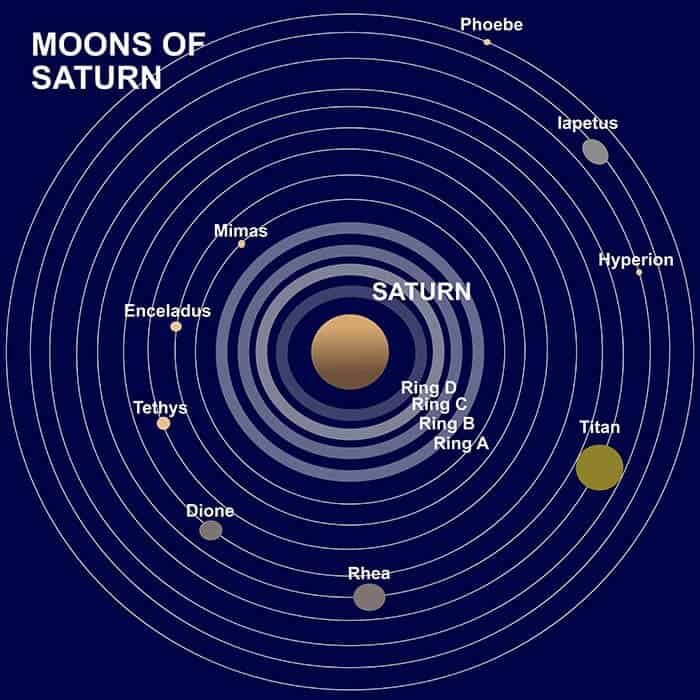10 Hyperion Moon Facts | Cool Facts About Hyperion
If you’re looking to find out more about the moons of our solar system, then Hyperion is an interesting one to look at. It doesn’t have the typical orbital patterns most moons do, and it definitely doesn’t have the typical shape either! Let’s look at some facts about the moon Hyperion.

- Hyperion has an estimated radius of 135km.
- This makes it around 1/12th the size of the Earth’s moon, and 1/400th the size of the planet Saturn.
- Hyperion orbits Saturn as an estimated distance of 933,000 miles (1,500,000 kilometers).
- Hyperion has an orbital period of 21 days. This is how long it takes for it to orbit around the Sun.
- This moon takes it’s name from Greek mythology – Hyperion is actually the older brother of Cronus, who is the Greek equivalent of Saturn.
- It was discovered in 1848 by a group of American astronomers, including George Phillips Bond, the first person to photograph a star.
- Hyperion is the largest moon in the solar system that has an irregular shape. Another moon, Proteus, is also considered to be irregular, but it is much more spherical than Hyperion.
- There are many deep craters on the surface of Hyperion, which is where it gets it’s sponge-like appearance.
- The largest crater on Hyperion is approximately 75.54 mi (121.57km) in diameter and more than 6 miles (9.6km) deep.
- Hyperion has an average surface temperature of -180°c.
Hyperion takes it’s name from the Titan God in Greek mythology. He was actually the child of Gaia, who is Earth personified, and Uranus, who was sky personified. Hyperion is referenced sparingly throughout classic Greek myths like Homer’s Odyssey.
Many of the moons that orbit Saturn have a very low density, and Hyperion is the same. This means that it is very likely that it is made up primarily of water ice, though we aren’t 100% sure on this. Hyperion is known for being an irregular shape – in fact, it is the largest of the moons that orbit Saturn that are considered to be irregular. The only other moon larger than this one that has an irregular shape is Neptunian moon, Proteus. It is thought that this moon is likely the resulting debris from a collision between two objects, billions of years ago.
As mentioned, there are a lot of craters on the surface of Hyperion – so many that it is often referred to as the porous moon. These craters are as deep as 5 or 6 miles, and give it it’s sponge like appearance. This is also because at the bottom of the craters, the surface is made up of a dark material, which makes it look even more like a sponge.
We know that Hyperion is actually quite distant from Saturn, so it has a fairly long orbital period of 21 days. However, the more interesting part of Hyperion’s orbital patterns is that it is quite wild when it moves around the planet. Because of it’s strange shape, it is actually quite volatile and it’s orientation is unpredictable in comparison to a spherical moon. It’s the only moon that isn’t actually tidally locked to it’s planet.
The answer is that although it can be very difficult, you can actually see Hyperion with a telescope. However, you need a good telescope to do this!
So, this strange looking sponge like moon is one of the unique moons in our solar system. It was actually the first irregularly shaped moon to be discovered back in the mid 1800s. However, it’s understandable that it doesn’t take a spherical shape due to it’s extraordinary rotational patterns. So whilst Hyperion isn’t the biggest moon, it certainly is one of the most fascinating.